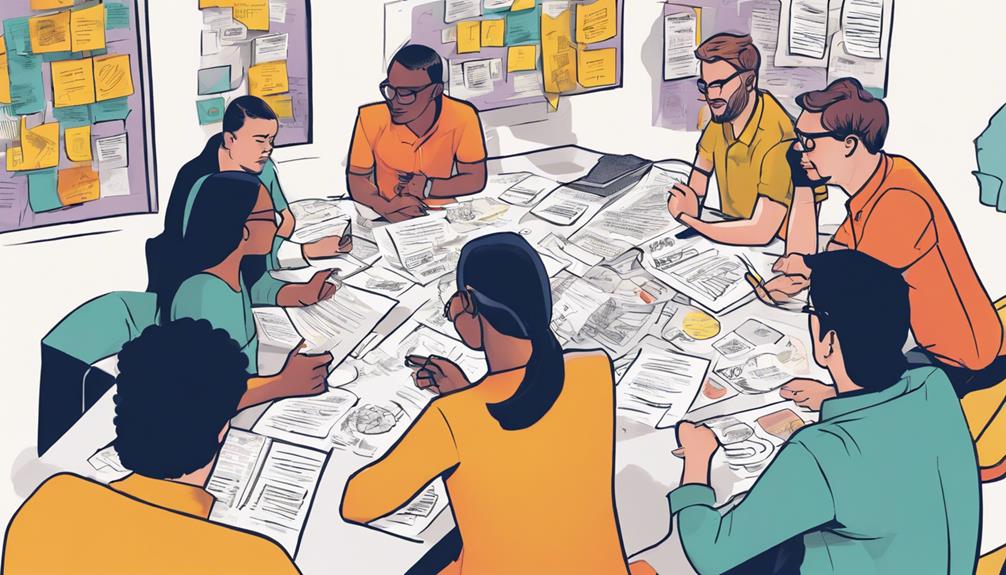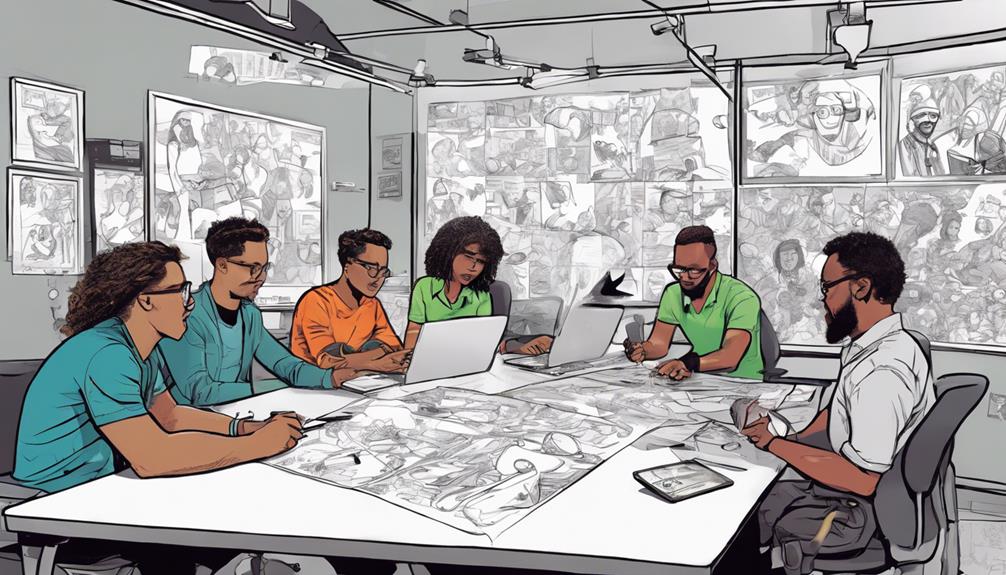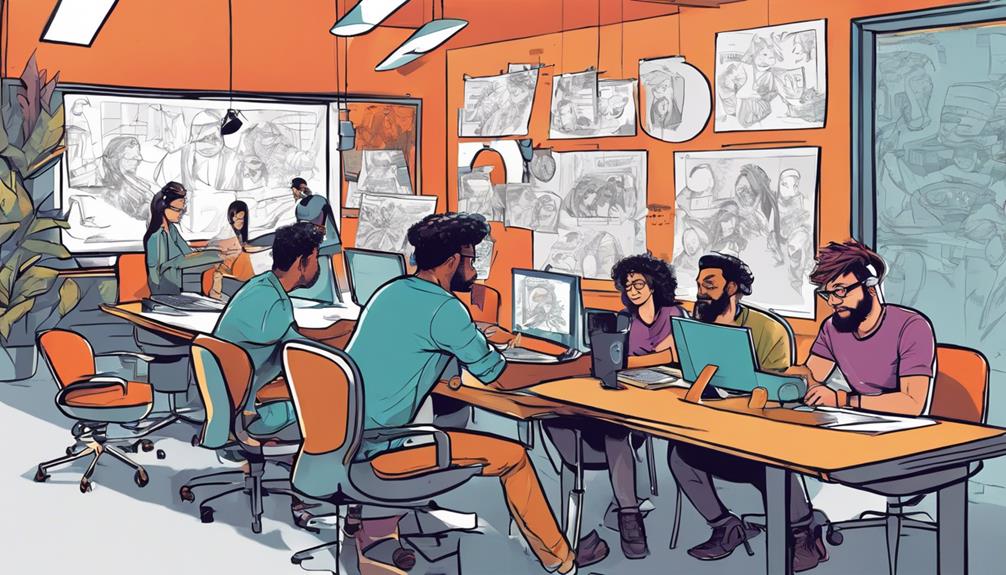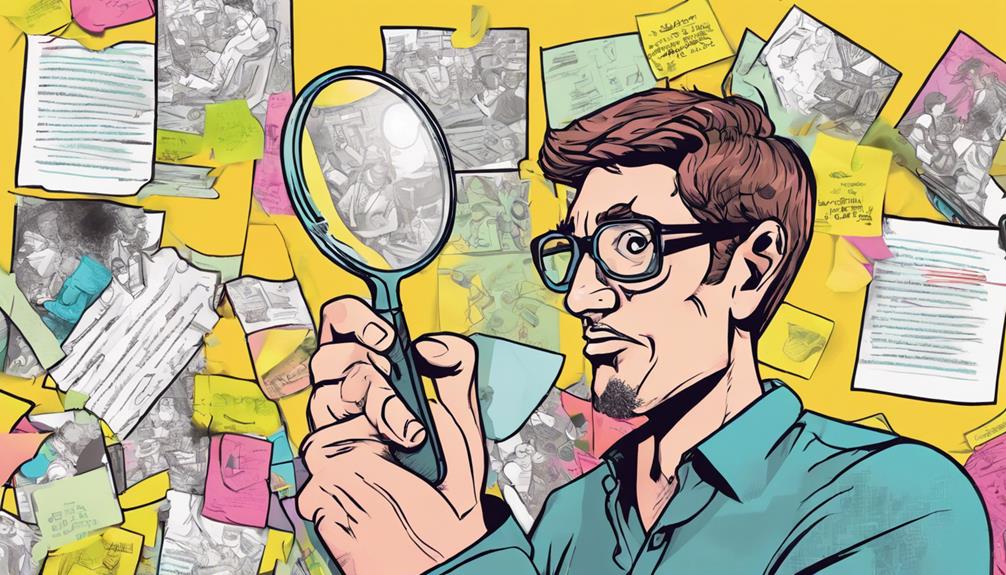Discover the 5 essential stages of design thinking: Empathize by understanding user needs, Define to analyze insights, Ideate for creative solutions, Prototype to test ideas, and Test with real users for feedback. Each stage plays a critical role in developing user-centered designs and driving innovative problem-solving. Mastering these stages will guide you through crafting impactful solutions that resonate with users on a deeper level. Explore the fundamental principles behind each stage to reveal the full potential of design thinking and elevate your approach to creating meaningful and effective designs.
Key Takeaways
- Empathize: Understand user emotions and motivations.
- Define: Analyze insights, develop personas, and craft problem statement.
- Ideate: Generate diverse, creative solutions through brainstorming.
- Prototype: Create tangible representations for testing and refinement.
- Test: Progress from prototyping to testing with real users for iterative enhancements.
Empathize
To kick off the design thinking process effectively, you must first understand your users' needs and experiences by connecting with them emotionally. During the empathize stage, techniques like user interviews, observations, and empathy maps are used to collect valuable insights. By practicing empathy, designers can gain a deep understanding of users' emotions, challenges, and motivations. This stage is essential as it lays the foundation for problem-solving by unveiling critical user insights and perspectives.
Empathizing with users allows you to see the problem from their perspective, paving the way for more user-focused solutions. Through empathy, designers can explore the heart of user experiences, enabling them to understand the complexities of what motivates their target audience. By immersing yourself in the world of your users, you can develop products and services that truly resonate with their needs and dreams. The empathize stage is where the journey to innovative and impactful solutions begins.
Define

Understanding your users' needs and experiences through empathy sets the stage for the Define phase in design thinking. During this define stage, several key aspects come into play:
- Analyzing user insights and data to understand their requirements thoroughly.
- Identifying patterns and themes in the collected information to uncover underlying user needs.
- Developing personas to represent different user segments and their unique characteristics.
- Defining specific design requirements based on the insights gathered to address user needs effectively.
- Crafting a well-defined problem statement that will guide the ideation process towards generating innovative solutions.
Ideate

During the Ideate stage in design thinking, teams focus on generating creative solutions to the defined problem by encouraging brainstorming and exploring diverse perspectives. This phase values quantity over quality, aiming to produce a wide array of potential solutions.
Techniques such as mind mapping, sketching, and role-playing are commonly employed during ideation to spark innovative ideas. The primary goal of ideation is to foster a creative environment where team members can freely explore and develop new concepts without judgment or limitations.
By prioritizing the generation of numerous ideas, teams can guarantee that they've a rich pool of possibilities to examine when moving forward to the next stages of the design process.
Prototype

Creating tangible representations of ideas for testing and validation is a key aspect of prototyping in design thinking. Prototyping allows teams to visualize concepts, gather feedback, and iterate quickly on potential solutions.
Here are some key points to understand about prototyping:
- Prototypes can range from low-fidelity sketches to high-fidelity digital mockups, depending on the stage of development.
- Iterative prototyping enables continuous refinement based on user feedback and testing results.
- Feedback from user testing helps in validating ideas before progressing to full-scale development.
- The main goal of prototyping is to create tangible representations that can be interacted with and evaluated.
- Through prototyping, teams can quickly test ideas, gather insights, and make informed decisions to improve the design solution.
Test

To progress from prototyping to the next pivotal stage of design thinking, focus on testing your prototypes with real users for valuable feedback and insights. Testing is necessary to validate ideas, refine prototypes, and iterate on solutions to enhance the user experience.
By observing users' interactions with the prototypes, designers can gather feedback to identify flaws and make necessary improvements. This iterative process allows for continuous enhancements based on real-world usage and user input.
Through testing, designers ensure that the final solution effectively addresses the identified problem and meets user requirements. It's a critical step in the design thinking process that helps in fine-tuning designs for optimal usability.
Embracing testing as a core aspect of the design process enables designers to create solutions that are truly user-centered and impactful.
Frequently Asked Questions
What Is the 5 Stages in Design Thinking?
The 5 stages in design thinking are Empathize, Define, Ideate, Prototype, and Test. You understand user needs, define problems, generate ideas, create prototypes, and validate solutions in an iterative process for innovation.
What Are the 5 Steps of the Design Process?
In the design process, you start by empathizing with users, defining the problem, ideating creative solutions, prototyping ideas, and testing them. These steps help you create innovative solutions that truly meet user needs.
What Are the Five Main Characteristics of Design Thinking?
You must understand the five main characteristics of design thinking. Start by recognizing its emphasis on empathy, problem definition, ideation, prototyping, and testing. These elements shape a process focused on innovation and user-centric solutions.
What Are the Critical Phases of the Design Process?
To understand the critical phases of the design process, you must grasp the key stages: Empathize, Define, Ideate, Prototype, and Test. These steps guide you through user-centered problem-solving, creativity, and testing for effective design solutions.
Conclusion
To sum up, grasping the 5 critical stages of design thinking is crucial for generating innovative solutions.
By empathizing with users, defining the problem, devising creative solutions, prototyping ideas, and testing them, you can guarantee that your design process is comprehensive and efficient.
By exploring the validity of this theory, you can further improve your comprehension and implementation of design thinking principles.









